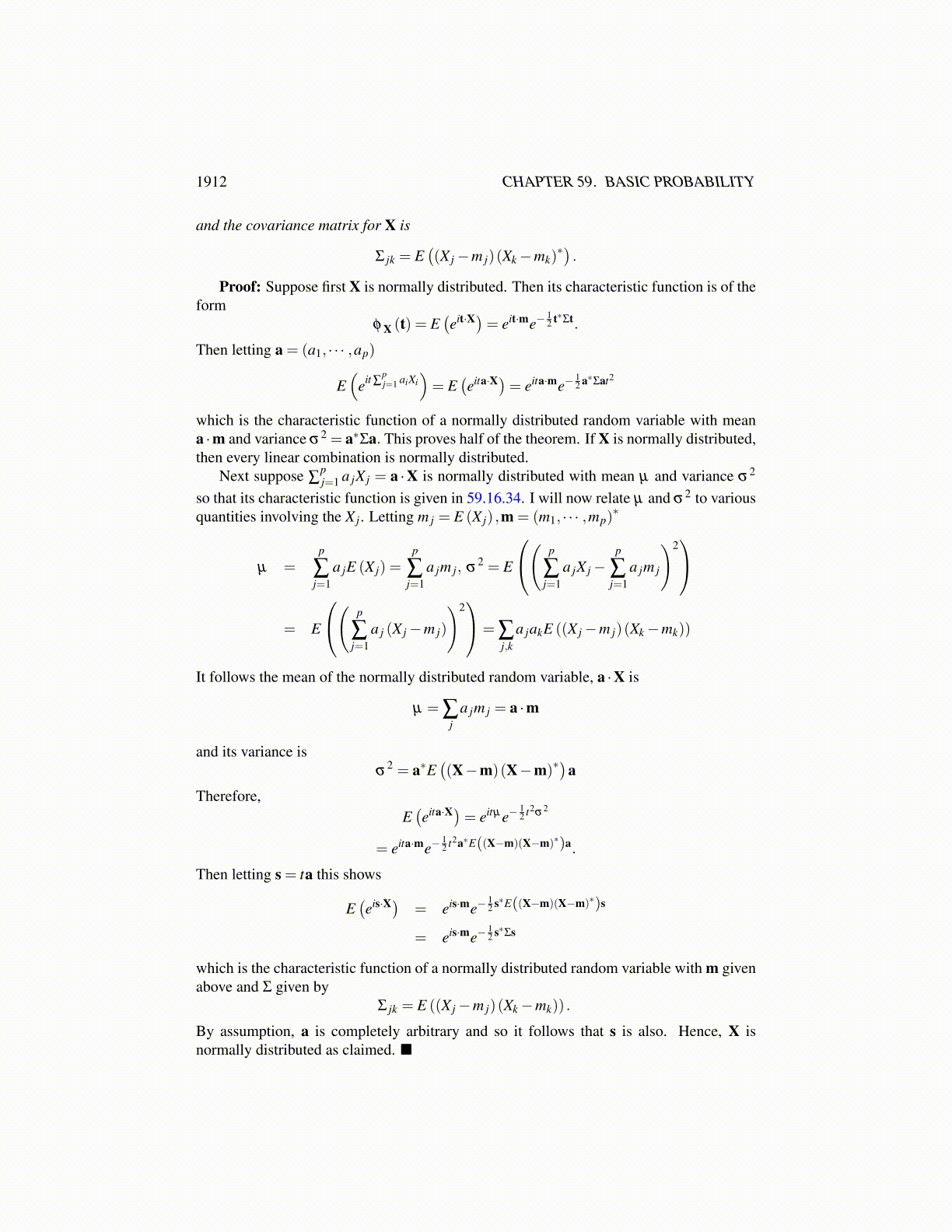
1912 CHAPTER 59. BASIC PROBABILITY
Also, if X∼ Np (m,Σ) then −X∼ Np (−m,Σ) . Furthermore, if X∼ Np (m,Σ) then
E(eit·X)= eit·me−
12 t∗Σt (59.16.32)
Also if a is a constant and X∼ Np (m,Σ) then aX∼ Np(am,a2Σ
).
Proof: Consider E(eit·X) for X∼ Np (m,Σ).
E(eit·X)≡ 1
(2π)p/2 (detΣ)1/2
∫Rp
eit·xe−12 (x−m)∗Σ−1(x−m)dx.
Let R be an orthogonal transformation such that
RΣR∗ = D = diag(σ
21, · · · ,σ2
p).
Then let R(x−m) = y. Then
E(eit·X)= 1
(2π)p/2∏
pi=1 σ i
∫Rp
eit·(R∗y+m)e−12 y∗D−1ydy.
ThereforeE(eit·X)= 1
(2π)p/2∏
pi=1 σ i
∫Rp
eis·(y+Rm)e−12 y∗D−1ydy
where s =Rt. This equals
eit·mp
∏i=1
(∫R
eisiyie− 1
2σ2i
y2idyi
)1√
2πσ i
= eit·mp
∏i=1
(∫R
eisiσ iue−12 u2
du)
1√2π
= eit·mp
∏i=1
e−12 s2
i σ2i
1√2π
∫R
e−12 (u−isiσ i)
2du
= eit·me−12 ∑
pi=1 s2
i σ2i = eit·me−
12 t∗Σt
This proves 59.16.32.Since X1 and X2 are independent, eit·X1 and eit·X2 are also independent. Hence
E(eit·X1+X2
)= E
(eit·X1
)E(eit·X2
).
Thus,
E(eit·X1+X2
)= E
(eit·X1
)E(eit·X2
)= eit·m1e−
12 t∗Σ1teit·m2e−
12 t∗Σ2t
= eit·(m1+m2)e−12 t∗(Σ1+Σ2)t